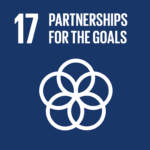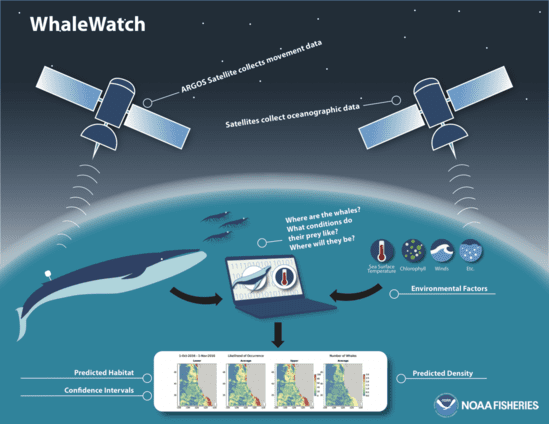Artificial intelligence (AI) holds the potential to solve some of society’s biggest, most pressing challenges. Here are three ways AI can be applied to achieve the SDGs.
AI has the potential to accelerate progress towards the Sustainable Development Goals (SDGs) in a number of ways. For example, it can be used to improve the efficiency of healthcare delivery, increase access to education, and enhance the management of natural resources. Additionally, AI can be used to analyze large amounts of data, identify patterns and trends, and make predictions that can inform policy decisions. This can help organizations and governments to better understand and address the complex challenges associated with the SDGs, such as poverty, inequality, and climate change.
RELEVANT SUSTAINABLE GOALS

In nearly every sector, artificial intelligence is poised to deliver transformative benefits. The adoption of AI is already bringing societal benefits to these fields around the world:
- Healthcare – Scientists are using advanced artificial intelligence techniques to speed drug discovery by identifying chemicals, molecules, and compounds that may be most effective in treating specific diseases.
- Climate change – Artificial intelligence techniques are helping to improve weather prediction and are contributing to our energy system’s decarbonization.
- Transportation – Advanced driver assistance systems (ADAS) have shown the potential to improve the safety of vehicles.
- Finance – Artificial intelligence techniques are allowing financial services companies to identify fraud and corruption more effectively.
- Insurance – Using AI applications such as computer vision, claims are processed more quickly and damage assessments are more accurate.
Despite this, the “man-made” element ofAI also poses risks and adverse effects on society since it removes a significant amount of human interaction. To guide the use and development of responsible artificial intelligence that has positive outcomes for people, businesses, and public services, Hewlett Packard Enterprise (HPE) has developed a set of AI Ethical Principles. Glenn Leon, Chief Ethics Officer at HPE, provides an overview of the ethics of artificial intelligence in his blog, Innovation in the Ethics of Artificial Intelligence.
The following are three ways in which artificial intelligence (AI) can contribute to achieving the Sustainable Development Goals (SDGs) of the United Nations:
AI As A Catalyst for Innovation
One example of how AI can be used as a catalyst for achieving the Sustainable Development Goals (SDGs) is in the area of healthcare. By using machine learning algorithms and big data analysis, AI can help to improve the efficiency and effectiveness of healthcare delivery. For example, AI-powered diagnostic tools can help to identify disease outbreaks more quickly, while also reducing the need for expensive and invasive diagnostic procedures. Additionally, AI can be used to analyze patient data, predict potential health risks, and provide personalized treatment recommendations. This can help to improve health outcomes, reduce healthcare costs, and increase access to quality healthcare for underserved populations.
Another example is in the area of agriculture, AI can be used to monitor and optimize crop yields, predict weather patterns, and detect pests and diseases. This can help to improve food security and reduce the negative impact of agriculture on the environment.
In addition, AI can be used to support financial inclusion, by analyzing large amounts of data to identify patterns of creditworthiness, and to predict patterns of fraud. This can help to improve access to financial services for low-income households and small businesses.
These are just a few examples of how AI can be used as a catalyst for achieving the SDGs, but there are many more applications where AI can play a key role in promoting sustainable development.
AI As A Tool For Enhancing Intelligence
AI can be used as a tool for enhancing human intelligence in a number of ways. One of the main ways it can do this is through machine learning algorithms that can identify patterns and make predictions based on large amounts of data. This can help people make more informed decisions and improve their ability to solve problems.
Another way that AI can enhance human intelligence is through natural language processing (NLP) and natural language understanding (NLU) technology, which can enable machines to understand and respond to human language. This can help to improve human-computer interaction and make it easier for people to communicate with machines.
Thailand has more than 1.7 million people with disabilities, but only 30 percent of them are employed. It’s a problem Methawee Thatsanasateankit wanted to solve. Thatsanasateankit founded Vulcan Coalition in 2020 with the aim of improving the quality of life of people with disabilities and developing new AI services in Thai language.
AI can also be used to automate repetitive or time-consuming tasks, allowing people to focus on more complex and creative work. This can help to increase productivity and efficiency, and reduce the risk of human error.
Additionally, AI can be used to augment human cognitive abilities, such as memory, attention, and perception. This can help to improve decision-making, problem-solving, and overall human performance.
It is important to note that AI is a tool and it’s performance and outcome depends on the way it is used and the data it is trained on. As AI technology continues to advance, it has the potential to become an increasingly powerful tool for enhancing human intelligence.
AI As A Problem Solver
AI can be used as a problem solver in many different ways. One of the main ways it can do this is by analyzing large amounts of data and identifying patterns and trends that can inform decision-making. This can help to improve the efficiency and effectiveness of problem-solving in many different industries, such as healthcare, finance, and transportation.
Another way that AI can be used as a problem solver is through the use of machine learning algorithms, which can be trained to make predictions and identify solutions based on historical data. This can help to improve forecasting, optimization, and decision-making in a wide range of applications.

Whales can be very hard to find in Earth’s vast seas. NOAA Fisheries’ scientists and partners use a range of technologies and research techniques to locate whales and study their behavior. Some of these techniques are new and exploratory while others are tried and tested, but all are providing important data on protected whale species.
These are just a few examples of how AI can be applied to different SDGs, but there are many more potential applications. It is important to note that AI is a tool and it’s effectiveness depends on the quality of data it is trained on, the specific problem it is applied to, and the way it is used.
You may also be interested in :
Samsudin Dongeng Keliling Inspiring Environmental Awareness Through Fairtales


